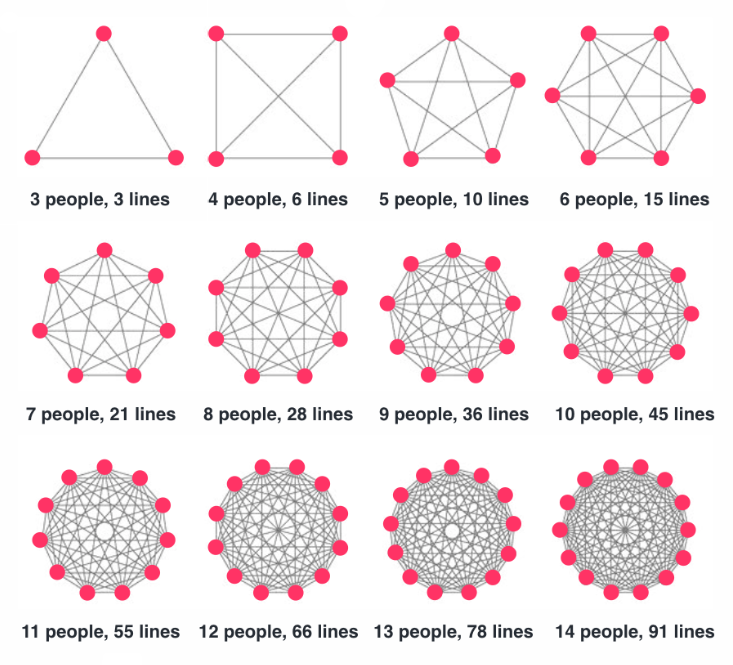We recently came across an insight that doubled down on a hypothesis that we’ve been exploring. It’s the complexity of relationships between teams. This insight states as show below that with every new hire comes increased complexity and not necessarily increased capacity. That’s not far from the truth.

Except, we must also note that this graphics under-estimates the potential lines of connection. Although it’s assuming that the only connections being formed are paired ones. Far from that, you also have the kind of connection of two people mapping onto one person. You can have four people mapping onto another four. Talk of this as the emergence of cliques within teams. For managers, this is where within your team, other teams emerge.
This cannot be avoided, for every formal team in an organization, there’s always at least three informal teams. And people can belong to more than one informal team. Informal teams tend to also be cross-functional. We underestimate the ability of people to organize themselves outside the formal structures of the organization. These teams can be noticed during townhalls, people tend to sit with the same people. You can notice these teams at lunch, informal teams have their corners.
A manager’s role is to build a cohesive culture aligned towards a common vision and values. An effective manager must be cognizant of these complexities that exist as people map onto each other and form lines of connection. Thus, it also implies that managers must be strategic communicators, their messages should be clear, and consistent as they go out through these complexity nodes. The ultimate role of any manager is to build a high performance culture!

